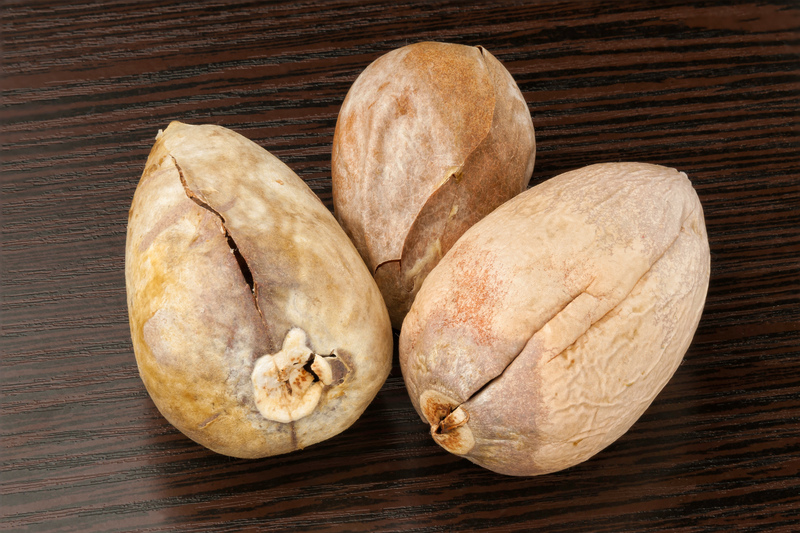Envelope in Warmth: Winter Plant Protection Techniques
Posted on 29/05/2025
Envelope in Warmth: Winter Plant Protection Techniques
As temperatures plummet and frost coats the landscape, every gardener faces the challenge of safeguarding their cherished plants from winter's bite. Whether you nurture vibrant perennials, delicate shrubs, or young vegetables, winter plant protection techniques are crucial to ensuring the survival and vitality of your garden. This comprehensive guide explores effective methods to envelope your garden in warmth, allowing your plants to emerge healthy and robust when spring returns.
Understanding the Importance of Protecting Plants in Winter
Winter brings unique challenges to outdoor plants, including frost damage, dehydration, and soil heaving. Low temperatures, icy winds, and unpredictable weather can wreak havoc on plant life, even in regions with mild winters. Without proper protection, sensitive roots, stems, and leaves can sustain irreversible damage.
Investing time and resources in winter plant care ensures:
- Continued health and development
- Reduced loss of valuable or sentimental specimens
- A more resilient and productive spring garden

Key Factors Affecting Plant Survival During Winter
For best results in enveloping plants in warmth, consider these critical factors:
- Plant Hardiness: Know your plant's hardiness zone and tolerance level.
- Soil Drainage: Well-drained soil prevents root rot during freezing and thawing cycles.
- Location: Exposure to wind, sun, and microclimates affects winter survival.
- Plant Age and Condition: Young or recently transplanted plants are more vulnerable.
Top Winter Plant Protection Techniques
Let's explore a range of proven methods to envelope your plants in warmth during winter and shield them from harsh weather:
1. Mulching: The Organic Blanket
Mulching is one of the simplest and most effective ways to insulate roots against icy temperatures. A thick layer of mulch protects the soil from rapid temperature changes, retains essential moisture, and reduces soil heaving.
- Apply a 2-4 inch layer of organic mulch: shredded leaves, straw, wood chips, or compost.
- Extend mulch slightly beyond the plant's drip line for maximum effect.
- Add extra mulch after the soil freezes to lock in cold temperatures and prevent sudden thaws.
Tip: Avoid burying plant crowns to prevent rot, especially for perennials and roses.
2. Creating Windbreaks and Barriers
Cold winds can dehydrate and chill plant tissues, increasing the risk of dieback. Building temporary windbreaks helps envelope vulnerable specimens in warmth and shield them from biting gusts.
- Use burlap screens, snow fencing, or plastic sheeting mounted on stakes.
- Position barriers on the windward side of plants, especially evergreens and young trees.
- Allow for air circulation to minimize fungal diseases.
3. Cloches, Row Covers, and Plant Wraps
Individual and grouped plants benefit greatly from winter coverings designed to trap heat and block frost:
-
Cloches:
- Bell-shaped glass or plastic covers placed over individual plants.
- Perfect for overwintering young annuals and frost-prone herbs.
-
Row Covers:
- Lightweight, breathable fabric (such as spunbonded polyester) draped over rows or beds.
- Secured with hoops or stakes; ideal for veggies and low-growing ornamentals.
-
Plant Wraps:
- Use burlap, horticultural fleece, or purpose-made wraps to cover shrubs and small trees.
- Loosely wrap from top to bottom to prevent broken branches and insulate trunks.
Note: Remove covers during mild spells to prevent overheating and allow air movement.
4. Protecting Containers and Raised Beds
Potted plants and raised beds are particularly susceptible to cold injury because their roots are above ground and therefore exposed to freezing air. Here are effective methods to shield them:
- Cluster pots together in a sheltered location near your home or garage wall for radiant warmth.
- Wrap pots with bubble wrap, burlap, or foam insulation.
- Sink containers into the ground or mulch heavily around them to envelope roots in warmth.
5. Anti-Desiccant Sprays for Evergreens
Broadleaf and needle evergreens, such as rhododendrons and hollies, can suffer from winter dehydration as they continue to lose moisture through their leaves even when the ground is frozen. Applying anti-desiccant sprays can reduce wind and sun scorch:
- Spray on mild days before heavy freeze events, following product instructions.
- Reapply after spells of wet weather for continued protection.
Specialized Winter Protection Strategies
For Roses
- Hill up soil: Pile 8-12 inches of soil or compost over the crown after the ground freezes.
- Cylinder protection: Place wire mesh or plastic collars around the base filled with leaves or straw.
- Burlap wrap: Surround the plant with burlap for wind protection.
For Young Trees and Shrubs
- Trunk wraps: Spiral tree wrap or flexible guards around the trunk to prevent sunscald and rodent damage.
- Mulch ring: Apply mulch in a wide ring, keeping it several inches away from the trunk or base.
- Water deeply before the ground freezes to fortify roots against desiccation.
For Perennials and Tender Bulbs
- Cut back stems: Prune loosely, leaving some material for insulation.
- Lift and store bulbs: Dig up non-hardy bulbs (such as dahlias) and store them in a cool, dry place.
- Extra mulch: Add an additional layer of mulch after the ground cools.
Timing: When to Protect Your Plants in Winter
The most effective winter plant protection starts before the first hard freeze. Monitor local weather forecasts and be ready to apply your chosen methods as temperatures approach freezing. In general:
- Early autumn: Reduce watering and fertilizing to encourage dormancy.
- Late autumn: Apply mulch, set up windbreaks, and cover sensitive plants when frost is imminent.
- Throughout winter: Check periodically for damage and adjust coverings as needed.
Common Mistakes in Winter Plant Care--and How to Avoid Them
To make your winter garden protection truly effective, be mindful of these frequent errors:
- Over-mulching: While mulch is vital, applying too thick a layer can cause rot and pest infestations. Use only 2-4 inches.
- Tightly wrapping stems: Avoid binding materials too snugly, as this restricts airflow and encourages disease.
- Forgetting to water: Plants still lose moisture in winter. Water on mild days if the soil is dry and not frozen.
- Leaving covers on during warm weather: Remove or loosen insulation during unexpected thaws.
DIY Plant Protection Projects for Gardeners
Protecting your green space in winter doesn't require fancy or costly supplies. Many effective DIY plant frost protection solutions can be assembled from everyday materials:
- Plastic Bottles: Cut large soda bottles in half to use as homemade cloches for seedlings and small perennials.
- Old Bed Sheets and Blankets: Drape over shrubs or vegetable rows at night to prevent frost damage. Remove during the day.
- Lumber Frames: Make simple frames from scrap wood or PVC, and cover with frost cloth.
- Leaves and Pine Needles: Bag fallen leaves and pile them over dormant plants for natural insulation.
Harnessing Mother Nature: Leveraging Microclimates
Every garden offers microclimates—tiny pockets where temperatures and wind exposure differ from the landscape at large. Take advantage of these to envelope plants in winter warmth:
- South-facing walls: Plant tender species near walls or fences that absorb and radiate solar heat.
- Low spots: Avoid planting in depressions where cold air settles and frost is most likely.
- Natural windbreaks: Use existing hedges or evergreen trees as a shield.
Envelope in Warmth: Winter Plant Protection for Indoor Plants
Don't forget your houseplants and delicate potted specimens that spend summer outdoors! Most tropical and subtropical plants require winter warmth and frost protection:
- Bring indoors: Transition plants gradually to a bright, draft-free spot inside. Avoid exposure to radiator heat.
- Reduce watering: Lower light levels and cooler temperatures mean less water is needed.
- Check for pests: Inspect and treat before moving indoors.
The Role of Watering in Plant Frost Protection
It may seem counterintuitive, but well-hydrated plants are more resilient against cold damage. Moist soils retain more heat than dry soils, reducing the risk of root freeze. Here's what you should know:
- Water deeply before a hard frost to ensure roots are well-protected.
- Avoid overwatering, especially in poorly drained soil where plants may rot.
- Check soil moisture during winter thaws and water as needed.
Winter Plant Protection: Looking Ahead
Mastering the techniques to envelope your garden in warmth is an investment in your landscape's future. With mindful practices—from mulching and windbreaks to careful watering and strategic plant placement—you can minimize winter losses and awaken to a vibrant, strong garden each spring.
Winter doesn't have to be a season of loss for your plants. Instead, it can be an opportunity to demonstrate stewardship and creativity!
Armed with these comprehensive winter plant protection techniques, every gardener can look forward to a greener, thriving landscape. Envelope your plants in warmth, and watch your garden triumph over the chill.

Frequently Asked Questions (FAQ) on Winter Plant Protection
-
Q: When should I start winterizing my garden?
A: Begin preparations in late autumn, before the first hard frost hits your region. -
Q: What is the best material for mulching in winter?
A: Organic materials such as shredded leaves, straw, and wood chips work well, offering both insulation and decomposition benefits. -
Q: Can I leave plant covers on all winter?
A: It's best to remove or loosen covers during warm spells to prevent overheating and fungal diseases. -
Q: Do all plants need winter protection?
A: While hardy natives may thrive without help, non-native, young, or vulnerable species benefit greatly from winter care.
Conclusion: Blanket Your Garden in Winter Warmth
An abundant spring starts with smart, thoughtful winter protection. By choosing the right winter plant protection techniques, adapting to your garden's needs, and responding proactively to changing weather, you ensure lasting beauty, productivity, and joy from your outdoor spaces. Invest in your plants' future--envelope them in warmth this winter!
```
